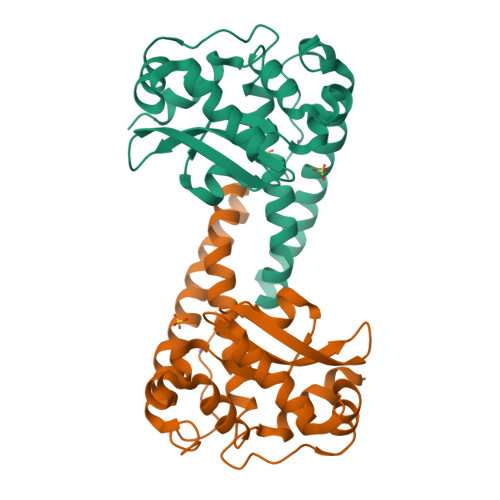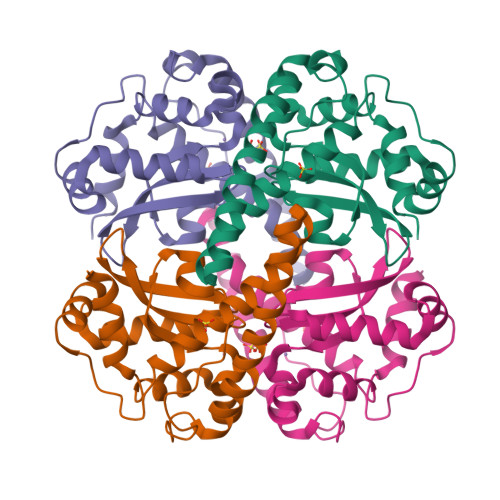Kinetic analysis of product inhibition in human manganese superoxide dismutase.
Hearn, A.S., Stroupe, M.E., Cabelli, D.E., Lepock, J.R., Tainer, J.A., Nick, H.S., Silverman, D.N.(2001) Biochemistry 40: 12051-12058
- PubMed: 11580280
- DOI: https://doi.org/10.1021/bi011047f
- Primary Citation of Related Structures:
1JA8 - PubMed Abstract:
Manganese superoxide dismutase (MnSOD) cycles between the Mn(II) and Mn(III) states during the catalyzed disproportionation of O(2)(*-), a catalysis that is limited at micromolar levels of superoxide by a peroxide-inhibited complex with the metal. We have investigated the role in catalysis and inhibition of the conserved residue Trp161 which forms a hydrophobic side of the active site cavity of MnSOD. Crystal structures of mutants of human MnSOD in which Trp161 was replaced with Ala or Phe showed significant conformational changes on adjacent residues near the active site, particularly Gln143 and Tyr34 which in wild-type MnSOD participate in a hydrogen bond network believed to support proton transfer during catalysis. Using pulse radiolysis and observing the UV absorbance of superoxide, we have determined rate constants for the catalytic dismutation of superoxide. In addition, the rates of formation and dissociation of the product-inhibited complex of these mutants were determined by direct observation of the characteristic visible absorption of the oxidized and inhibited states. Catalysis by W161A and W161F MnSOD was associated with a decrease of at least 100-fold in the catalytic rate of reduction of superoxide, which then promotes a competing pathway leading to product inhibition. The structural changes caused by the mutations at position 161 led to small changes, at most a 6-fold decrease, in the rate constant for formation of the inhibited complex. Solvent hydrogen isotope effects support a mechanism in which formation of this complex, presumably the peroxide dianion bound to the manganese, involves no rate-contributing proton transfer; however, the dissociation of the complex requires proton transfer to generate HO(2)(-) or H2O2.
Organizational Affiliation:
Department of Pharmacology, University of Florida, Gainesville, Florida 32610, USA.




















